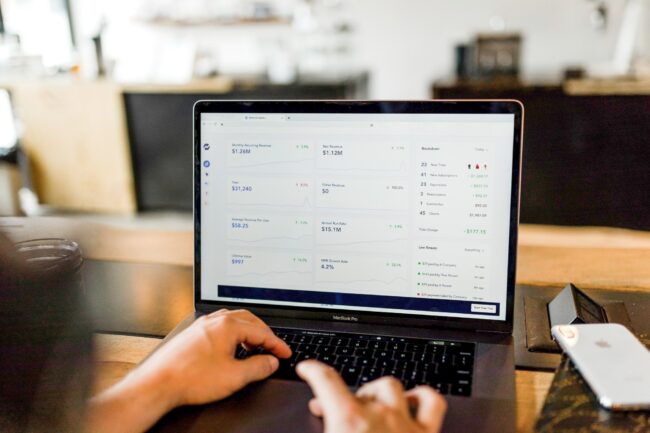
Running a hotel requires paying attention to the daily expenses and revenue of your hotel business. The average daily rate of a hotel can help you keep track of your general performance.
The ADR is a metric used to measure the average revenue a hotel gets daily from each of their rooms when occupied. This enables you to see the average rate that you get when all rooms are occupied in a day. The ADR of a hotel is inclusive of group rates, available rates, discounted rates, and price points per night.
Using ADR in a hotel enables the revenue managers to see the rates they expect on a specified week, month, or season. This information is crucial as it helps the hotel management make projections, set goals, targets, and plan. Tracking ADR enables a company to monitor its daily performance and identify areas that require improvements to increase revenue and overall gains for the hotel.
How to calculate the ADR of a hotel
To calculate the ADR of a hotel, you divide the revenue from room sales on a specified night by the number of rooms sold that night. Do not include rooms that were out of order and those occupied by staff at night in your calculation.
Setting ADR goals
Hotel managers need to set ADR strategies to increase hotel revenue. The management team should do a detailed analysis of their year-over-year numbers to note the patterns of the hotel during different seasons, missed sales, and check booking policies for potential high peak seasons.
How to increase hotel ADR
Hotel managers and revenue managers may introduce the following strategies to increase their hotel ADR.
1) Make add-ons available for purchase
Your clients at the hotel need to feel that they are getting more value for their money. Give the clients high financial value by creating packages and add-on options. You can include meals, gift packages in each room, tickets, or welcome basket add-ons. This will increase the revenue the hotels registers per booking and raise the ADR for the hotel.
2) Use of upsells and upgrades
The hotel can focus on upsells and upgrades to increase their revenue.
Upselling is where the hotel encourages customers to purchase any service that could make their initial purchase better. Upselling ensures that by paying a little more the clients can enjoy a better service. For example, in a hotel set up, clients who had made some reservation can change their booking to a more premium one by adding some money from their initial payments.
Upgrades enable you to introduce changes to the services you offer to improve consumer indulgences and ensure they have memorable experiences by staying at your hotel. You can add more on the packages offered at a higher rate to improve client�s experiences.
3) Personalise your marketing
Understand who your clients are, then target them directly in your marketing.
This can lead to high conversion rates as travelers feel they are your primary target. Packages and promotions that speak to the prospective traveler and appeal to their travel requirements will attract more clients to your hotels. Do customer segmentation, then personalise your marketing to each segment from the different categories you have.
This makes your clients feel that you have highlighted their needs, and you are ready to provide the amenities they need.
4) Offer extended stay discounts
You can target leisure travelers by offering extended discounts. These may also be appealing to guests that are looking for an opportunity to explore your area. Guests who may wish to explore more will look for hotels that offer large discounts for extended stay.
Extended discounts will increase the hotel revenue and increase the number of guests.
5) Maintain a good online reputation
Almost all your potential clients will check hotel reviews online before making any bookings. Create an active online presence to drive more business to your property, which will consequently increase ADR. Have professionals running and managing all your social media pages. The team should be fast to respond to requests from potential clients and also post captivating content on social media.
Market your hotel aggressively on all social media pages and ensure they have up-to-date information that potential clients may need.
6) Check the list of your arrivals regularly and your property management
Apart from focusing on the hotel revenue reports, ensure you review all your arrivals and check the property management system for more information about your hotel bookings. Find out the different clients arriving at the hotel. Search for any ADR opportunities by monitoring booking patterns. Close monitoring will help you identify a high number of days served at a discount. You can increase the rate on those days to increase the revenue for the business.
Difference between Average Daily Rate (ADR) and Revenue Per Available Room (RevPAR)
Revenue Per Available Room often abbreviated as RevPAR is a metric used in the hotel industry to measure performance. It shows you the average rate in which the hotel can fill vacancies with. An increase in the average room cost or the building occupancy rate will increase RevPAR of a hotel. You can calculate RevPAR by multiplying the ADR by the occupancy rate. You can calculate RevPAR by dividing average income per night by the number of rooms.
Unlike ADR that only considers the rooms that were sold, RevPAR accounts for all rooms available in a hotel, RevPAR takes into consideration both the daily rates and daily occupancy. An increase in hotel occupancy shows that the rooms are being priced to sell and that the company will get more revenue.
Importance of RevPAR
It is the most important revenue management indicator since it has a direct relationship with hotel room revenue. A rise in RevPAR shows there is an increase in room revenue.
For the hotel manager to optimise RevPAR, they need to find the right balance between price and occupancy rate. This achieves maximum room revenue for a hotel subject to customer demand.